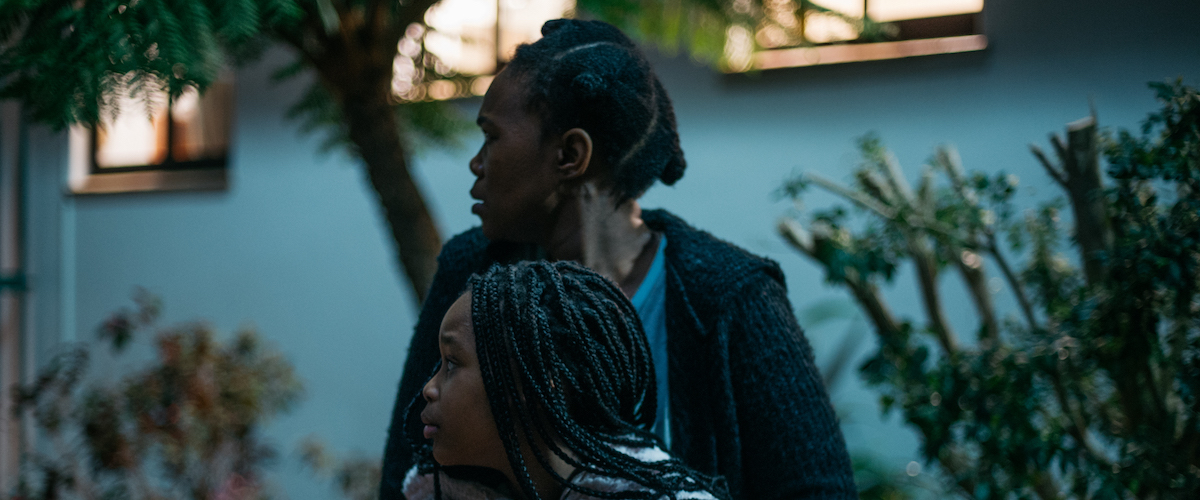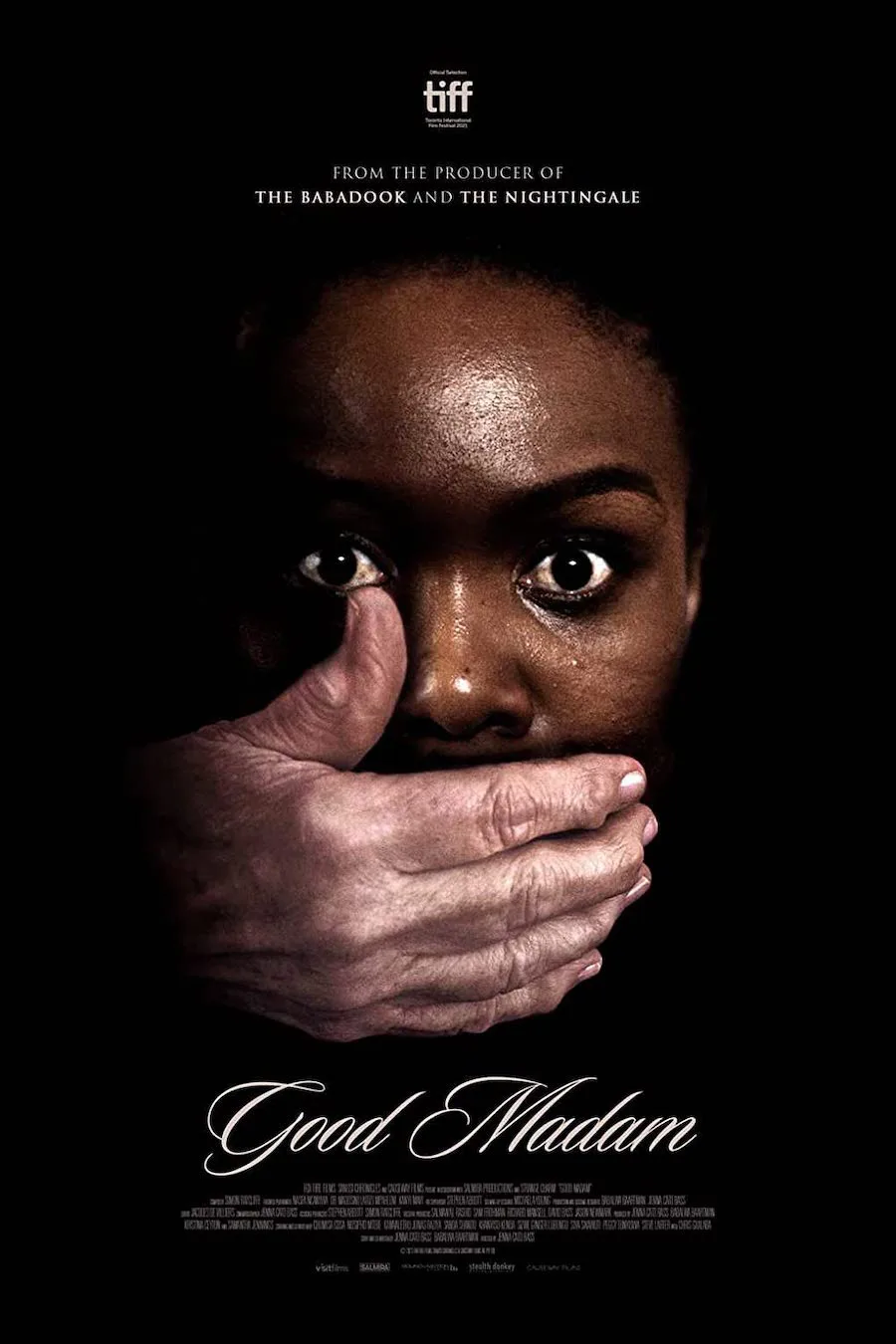It’s nice to know that the Black lady who sings “hmmmmmm-HMMMMMM” on the soundtrack to symbolize Black trauma in American movies has international equivalents. In the hideously offensive South African horror film “Good Madam,” she’s replaced by a cacophony of African chants and drums while all manner of terrible things occur onscreen. One character is nearly killed by her toothbrush. Another character, a domestic, is seen on her hands and knees scrubbing a floor so violently that her hands are shredded to bits. The sound mix repeatedly plays the scraping of numerous types of cleaning brushes so loudly that it sounds like a pterodactyl scratching itself. Without fail, anytime something bad is about to happen to stressed out mother Tsidi (Chumisa Cosa), the chants invade the soundtrack. The subtitles should say “humming mournfully” whenever that happens.
The brush noises are “symbolic” because one of the leads being tortured is Mavis (Nosipho Mtebe), who for decades took care of the house of a White woman named Diane. Mavis even raised Diane’s children at the expense of her own daughter, Tsidi. Tsidi was raised by her grandmother who, at the beginning of “Good Madam,” has died and left her granddaughter in an untenable living situation. This forces her to seek refuge in Diane’s house with her mother and daughter, Winnie (Kamvalethu Jonas Raziya). Mavis sets the ground rules early, including no running, no making noise, and no touching the refrigerator. The number one rule on that list is to never go into Diane’s room. “So, we pretend like we’re not here even though we are,” says the very astute Winnie.
No, Diane’s not dead. She’s very much alive, as evidenced by the bell she keeps ringing every time she needs something from Mavis. However, she’s old and sickly. Mavis’ devotion to her borders on obsession, angering her daughter so much that she refers to their relationship as a form of apartheid. Meanwhile, Tsidi starts to have visions that disturb her, several of which include Diane’s deceased dog. “This house doesn’t like me,” she tells her daughter, hinting at a history of supernatural elements that befell her when she used to visit her mother as a child. Could her mother be under some kind of servitude based curse conjured up by Diane, and does that curse now need younger hands to inherit the cooking and the cleaning?
The screenplay for “Good Madam” is credited to 12 people, which may account for its inability to maintain tone and coherence. The real problem here, however, lies in the gaze of the film’s White director, Jenna Cato Bass. Her camera focuses on enormous close-ups of dishwater and soapy sponges wiping down surfaces, not to mention the scrub brushes. Diane’s luxury dishes are highlighted in numerous loving pans. Meanwhile, the Black characters are often reduced to isolated body parts like lips, hands, teeth, an ear and the top of their heads. When there’s a full shot of a face, it’s often lit so dimly that it evokes Al Jolson or a lawn jockey. One particularly egregious shot shows Tsidi (or is it Mavis) furiously cleaning the floor on all fours. All you can see are bugged out eyes and an enormous grin flying toward the camera repeatedly.
“No self-respecting Black cinematographer would allow their people to be shot like this!” I wrote in my notebook long before the end credits revealed Bass did her own cinematography. Oddly enough, every shot of Diane is as bright as the Sun, making the lighting an intentional choice throughout. It turns Tsidi and Mavis into exotic others rather than three dimensional characters. Even though she mostly appears in a benevolent looking photograph, Diane constantly threatens to take over a story that should center around its Black characters. If “Good Madam” is some kind of parable about the lasting effects of slavery and colonialism, why can’t the supernatural elements be straightforward symbols about those items?
Instead, we’re subjected to attempted mutilations, grave digging, possible witch spells, and a Black character whose villainy is so poorly explained that I’m still not sure who he is or what his motives are.
If this were remotely terrifying, I might be able to ignore some of the things that infuriated me. “Good Madam” is scare-free but incredibly cringeworthy. It got some rave notices when it played the Toronto International Film Festival, confounding me to no end. Maybe it was a different movie then, or maybe you just had to be there. What I saw was a racially suspect disaster and another exploitation of Black pain for cheap, lazy thrills. “Good Madam” is a bad movie.
Now playing on Shudder.




















